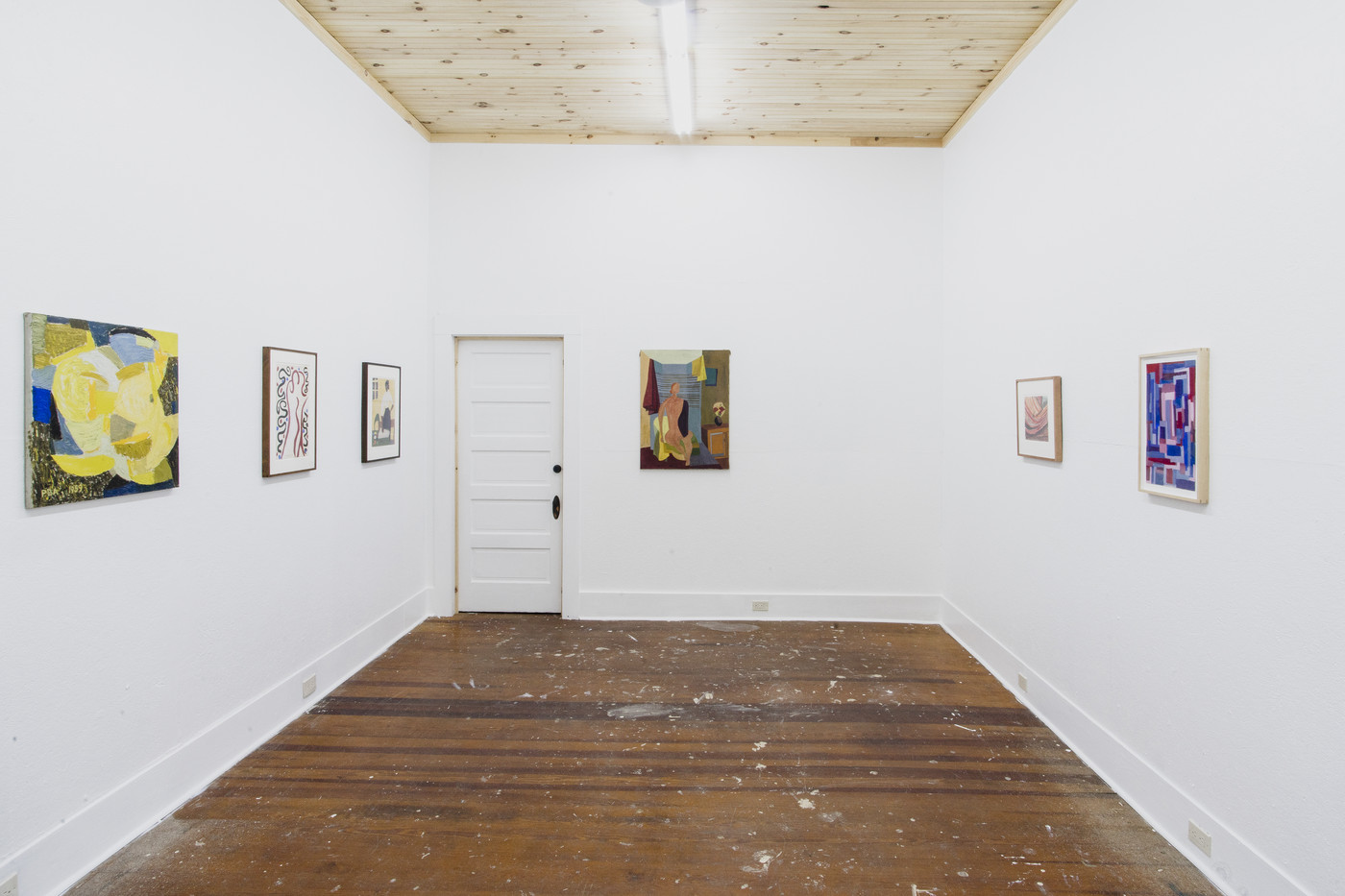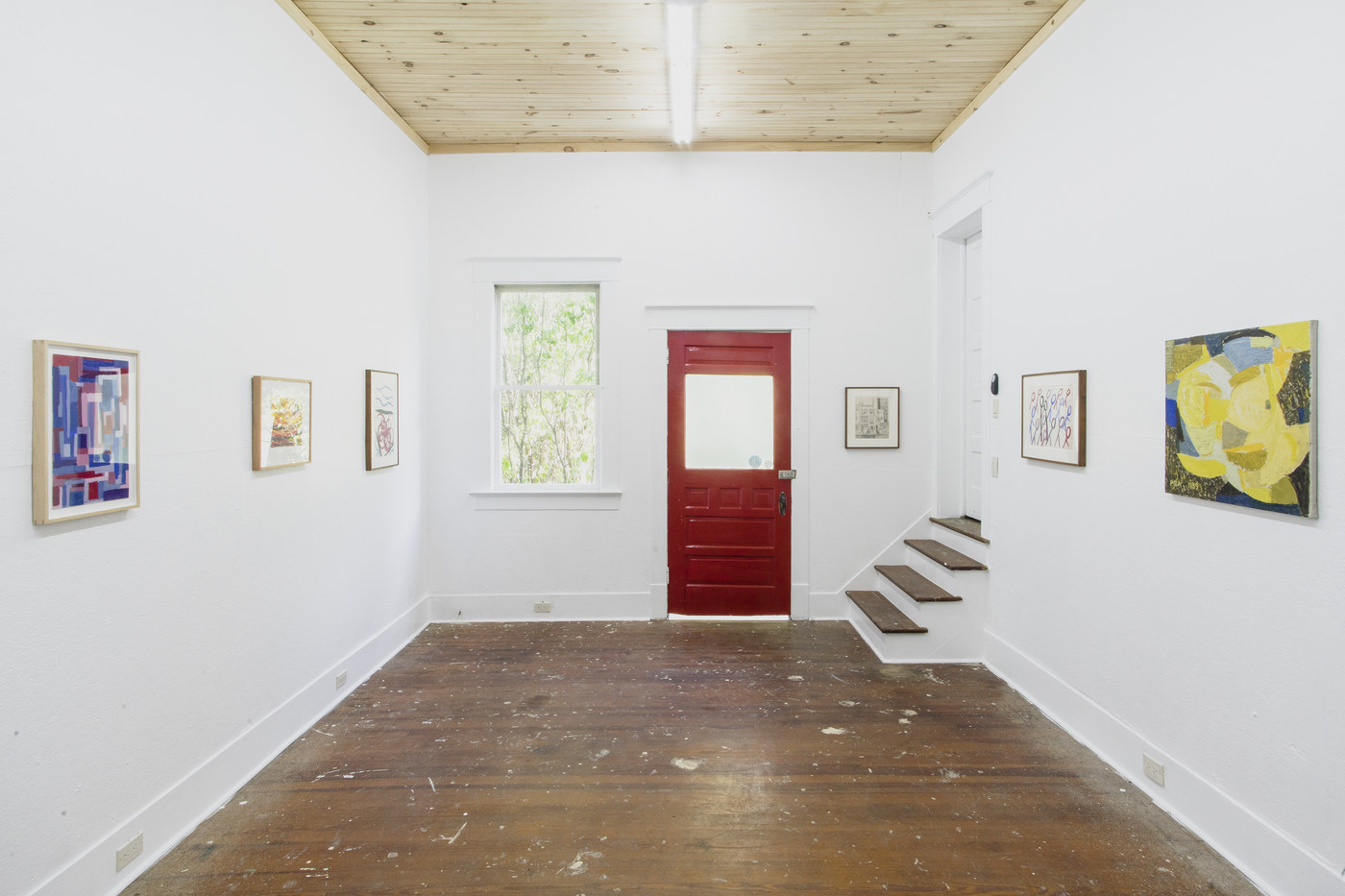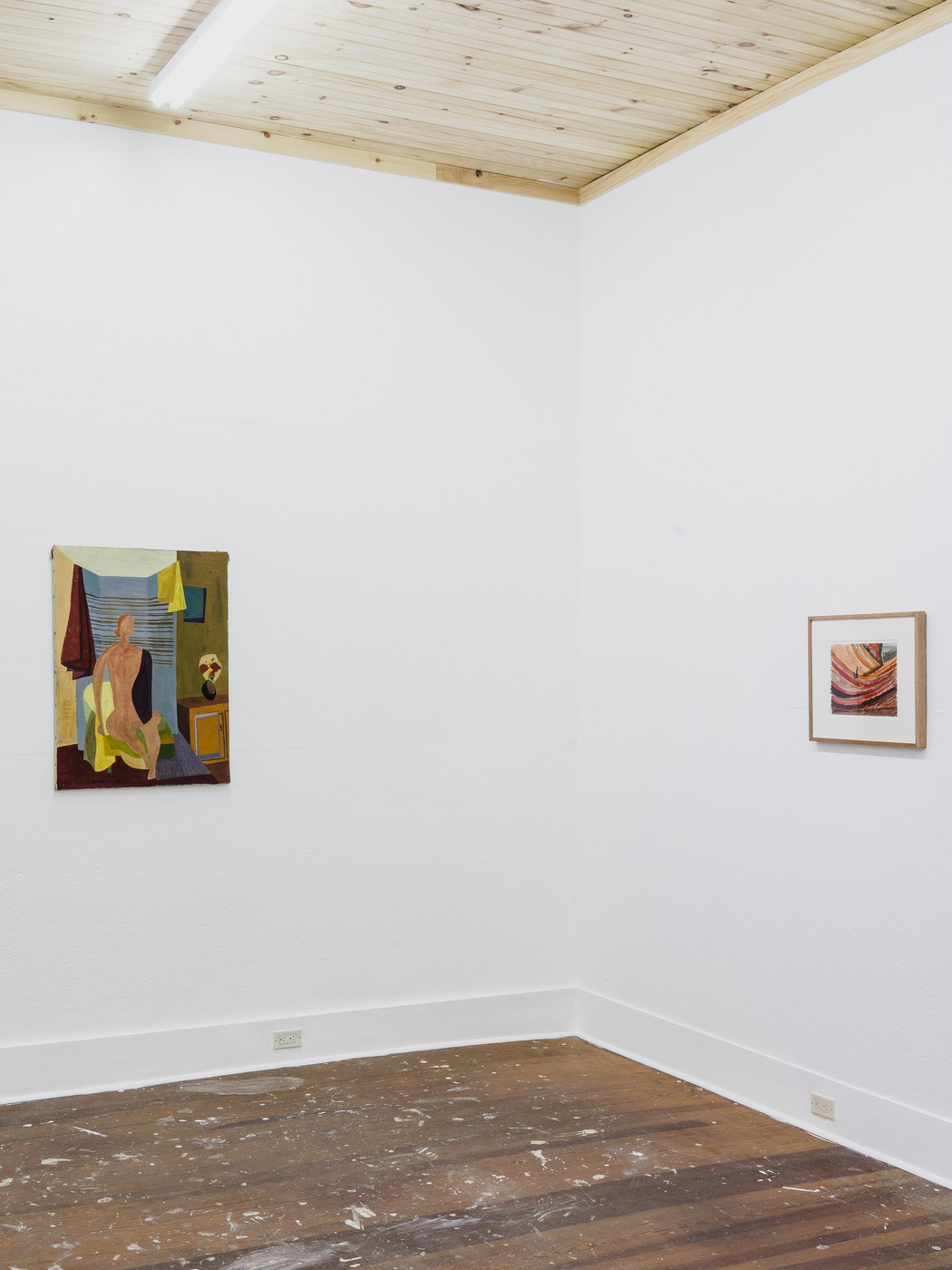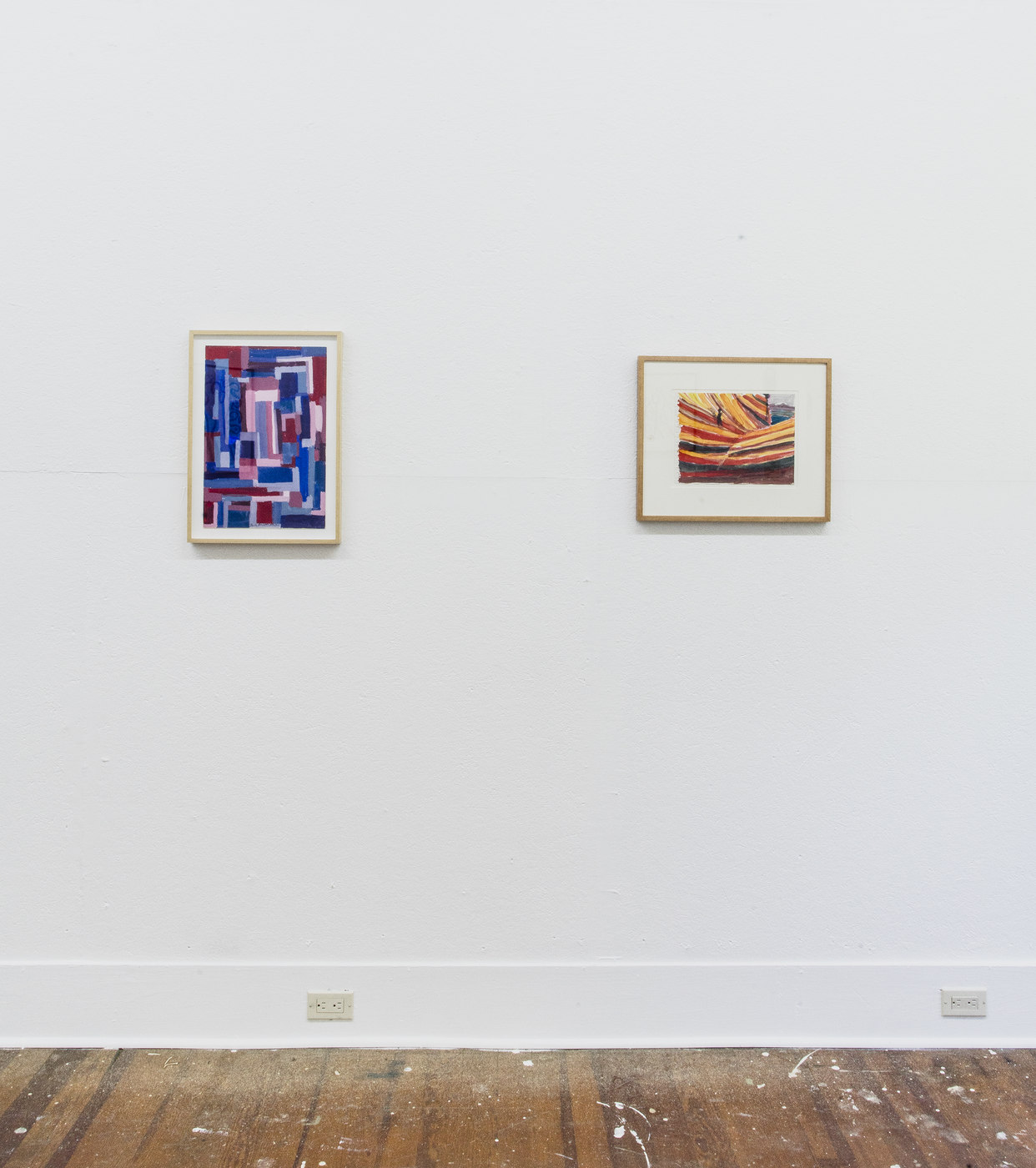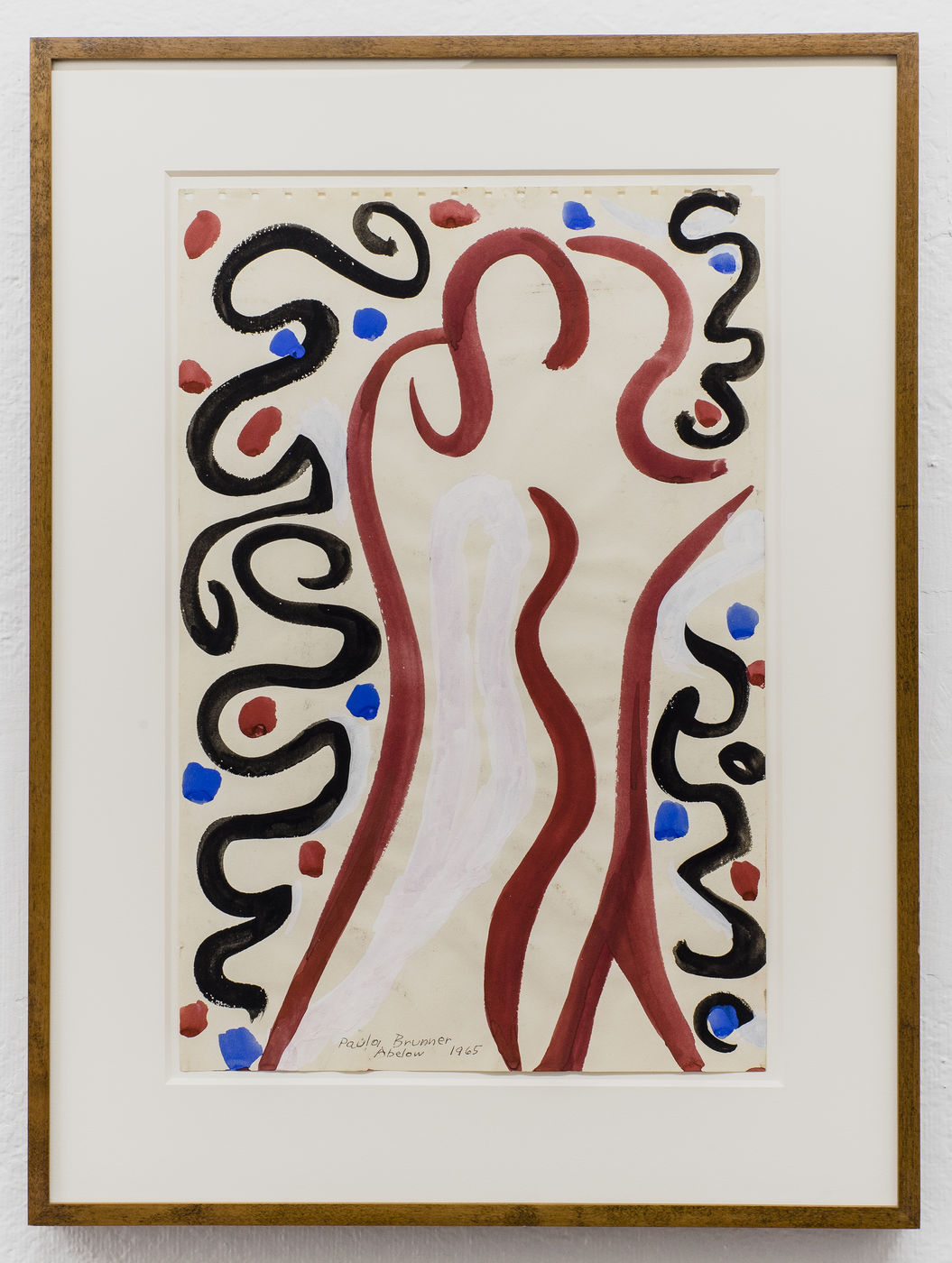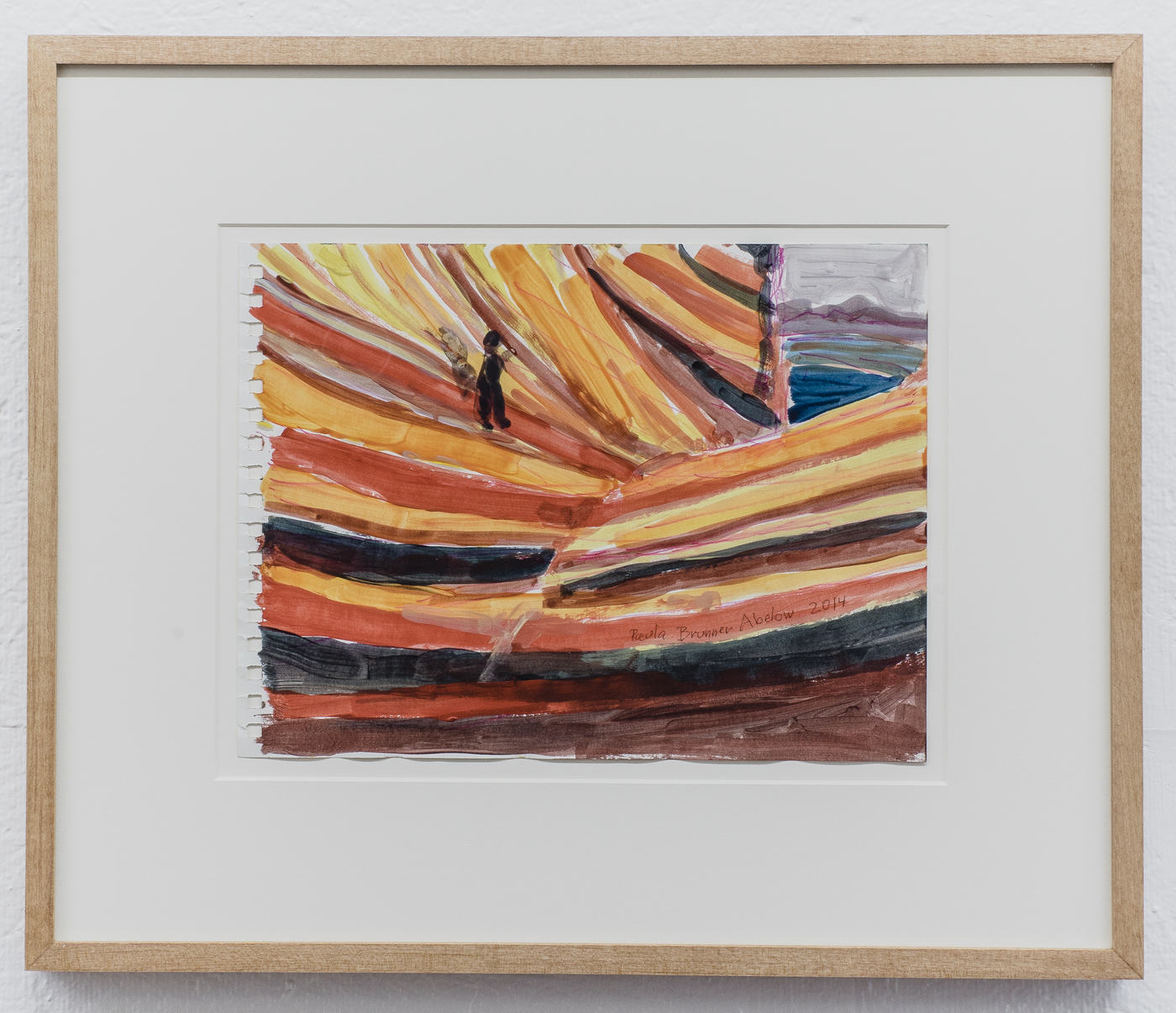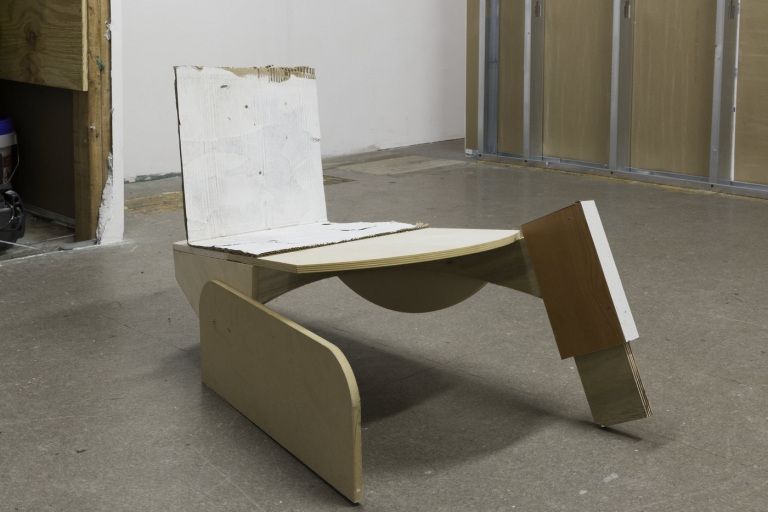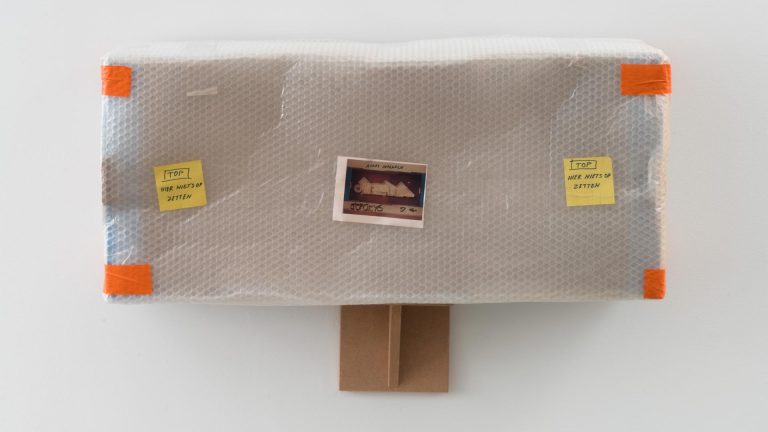Artist: Paula Brunner Abelow
Exhibition title: Time goes by
Venue: Freddy, New York, US
Date: August 6 – 27, 2016
Photography: Harry Gould Harvey IV of Newport, all images copyright and courtesy of the artist and Freddy
Father was well informed about politics. He was also an optimist. He had been making a good living in Prague. The country was a democracy and he had never thought of leaving. But this news from his Italian friend made him act fast. First he called my mother and instructed her to pack two suitcases full of his best merchandise, take them to the post office, and ship them to him in Switzerland, under the pretext that the stamps were for his exhibit.
Then, because he was leery about our having to cross borders through Austria and Germany and because he was able to pay for it—thanks to the availability of funds he had deposited from foreign sales into a Swiss bank—he was able to charter a Swiss plane to come and get us.
The plane had capacity for about 30 passengers, so Father told Mother to invite her four sisters with their spouses, as well as her brother and her mother, to come along, plus any friends who wanted to come.
We packed our clothes, some piano music, and the photo albums Mother had created for each of us, filled mostly with photos that she herself had taken. Because Mother used a Rolleiflex—a camera that allowed her to look down through a lens and see a clear picture of us—she was able to capture our childhoods in the beautiful square images that the Rolleiflex produced, even with her bad eyesight. We were not to talk about our impeding departure to anyone. It was a big secret. I did, though, visit my classmate and girlfriend, Friedl Kienzl (now Levitt in Vancouver, Canada), before leaving.
Since Czechoslovakia was preparing to go to war, we were not allowed to take any money out of the country. The plan was for us to fly out of Ruzin Airport near Prague at noon. But all of us were searched, especially mother, whom they (the Czechs), detained for six hours. By the time they let her go, she was a nervous wreck. When the authorities asked me if I had brought any money, I said I had one crown that my grandfather had given me. They let me keep it.
Our aunts and uncles all came to the airport to bid us farewell. But only grandmother Hermine and a couple of non-Jewish friends who were Swiss citizens flew with us. One of them was the wife of our faithful bookkeeper, Mr. Löw. We finally departed for Zurich, Switzerland at 6 pm on September 20, 1938. It was a beautiful flight into a sunset that seemed to last forever, since we were flying west.
In Zurich we stayed in a hotel for a few days. By then the Allies—France and Britain—sold Czechoslovakia to Hitler, giving him the [Sudetenland] as part of the infamous “appeasement” policy described above. Six months later, Hitler took all of Czechoslovakia.
Since there was no war, grandmother Hermine decided to go back to Prague, because she was lonesome for her other children. She died in August 1941, a year before the transports started.
I feel very lucky that Father had the foresight not to return with our family to Prague. We originally left because we thought war was coming—and he felt that the Allies had let Czechoslovakia down. As history proved, getting out in time saved our lives. By leaving as precipitously as we did, though, we left our apartment fully furnished with silver, paintings, and crystal. For six months, my father—or someone on his behalf—paid our rent for the apartment. During this period, our relatives and paid employees packaged most of our paintings, some sliverware, and Father’s trophies that they shipped to my parents in New York. Some of the artwork that now hangs in my home used to grace the walls of my childhood apartment in Prague.
When the Germans invaded Prague in March 1939, they confiscated everything that was left in the apartment.
This excerpt is taken from The Brunner Lieben Story, a memoir written by the artist in 2007. The full memoir is available here.
Paula Brunner Abelow, Time Goes By, 1965
Tempera on paper, 11 x 17 inches
Paula Brunner Abelow, Abstract in Yellow and Blue, 1959
Oil on canvas, 23 x 26 inches
Paula Brunner Abelow, Dancing, 1965
Tempera on paper, 17 x 11 inches
Paula Brunner Abelow, Artist, 1953
Tempera on paper, 16 x 13.5 inches
Paula Brunner Abelow, Nude in Studio, 1948
Oil on canvas, 34 x 25 inches
Paula Brunner Abelow, Figure in the Desert, 2014
Acrylic on paper, 9 x 12 inches
Paula Brunner Abelow, Abstraction, 1965
Tempera on paper, 17.5 x 12 inches
Paula Brunner Abelow, Figure in the Desert, 2014
Acrylic on paper, 9 x 12 inches
Paula Brunner Abelow, Turmoil Under The Sea, 1965
Tempera on paper, 17 x 11 inches
Paula Brunner Abelow, New York City Backyard, 1948
Pencil on paper, 11.5 x 9.5 inches


